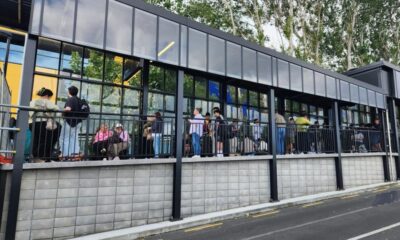Business
South Island Employers Seek Young Workers Amid Mixed Job Market

Employers in the South Island of New Zealand report a complex job market for young workers, as the government implements new measures affecting youth benefits. Starting in November 2024, teenagers aged 18 or 19 will not qualify for Jobseeker Support if their parents’ combined income exceeds $65,000. Prime Minister Christopher Luxon defended this policy, stating during a radio interview that “in the primary industries… they’re crying out for young people to come and join those sectors and those jobs”.
Luxon highlighted a recurring issue where young employees often do not remain in jobs for long, citing problems with punctuality and commitment. Despite these challenges, TradeMe‘s latest quarterly jobs report indicates a rise in job listings on the South Island, leading national trends. Yet, overall job listings across New Zealand showed a slight decrease compared to the same period last year.
The landscape for job seekers on the South Island appears troubling, as the number of individuals receiving Jobseeker Support has increased. In the September quarter, 36,834 South Islanders were on this support, reflecting a 2.7 percent rise from the previous year, marking the highest September quarter since 2020.
Job Opportunities and Skills Gaps
Some employers express frustration over the availability of jobs and the skills of potential applicants. Happi Aulakh, owner of Noble 600 Bar and Restaurant in Ashburton, stated he has a waiting list of ten individuals seeking work but lacks the positions to accommodate them. He noted, “If you are looking for a starting [level] job, either it’s really hard or you’re not getting enough hours.”
Conversely, Ziggy Shaw from Armadillos Ashburton mentioned that their group of restaurants was actively seeking both entry-level and skilled staff. “There’s definitely work available for everyone if you want to work,” he asserted. Shaw pointed out that individuals who prefer minimal hours while staying on benefits might struggle to find suitable roles.
Despite these assertions, the presence of “For Lease” and “For Sale” signs around Ashburton reflects a challenging business environment. Both Aulakh and Shaw acknowledged the difficulties of operating in mid-Canterbury at this time.
Housing Costs and Barriers to Employment
In Central Otago, young people face additional challenges, particularly regarding housing affordability. Gary Anderson, owner of an audio and appliance store in Cromwell, noted that high rental prices deter potential workers. While opportunities exist for qualified tradespeople and seasonal jobs in local orchards and vineyards, the cost of living poses a barrier.
In the neighbouring Clutha district, the situation mirrors that of Central Otago, with job openings concentrated in specific sectors. Employers in these areas confirm that while there is work available, the skills required may not align with those offered by many young job seekers.
As the South Island navigates this complex job market, the interplay between government policy, employer expectations, and housing affordability will continue to shape the future of young workers in the region.
-

 World1 week ago
World1 week agoPrivate Funeral Held for Dean Field and His Three Children
-

 Top Stories2 weeks ago
Top Stories2 weeks agoFuneral Planned for Field Siblings After Tragic House Fire
-

 Sports3 months ago
Sports3 months agoNetball New Zealand Stands Down Dame Noeline Taurua for Series
-

 Entertainment3 months ago
Entertainment3 months agoTributes Pour In for Lachlan Rofe, Reality Star, Dead at 47
-

 Entertainment2 months ago
Entertainment2 months agoNew ‘Maverick’ Chaser Joins Beat the Chasers Season Finale
-

 Sports3 months ago
Sports3 months agoSilver Ferns Legend Laura Langman Criticizes Team’s Attitude
-

 Sports1 month ago
Sports1 month agoEli Katoa Rushed to Hospital After Sideline Incident During Match
-

 World2 weeks ago
World2 weeks agoInvestigation Underway in Tragic Sanson House Fire Involving Family
-

 Politics2 months ago
Politics2 months agoNetball NZ Calls for Respect Amid Dame Taurua’s Standoff
-

 Top Stories2 weeks ago
Top Stories2 weeks agoShock and Grief Follow Tragic Family Deaths in New Zealand
-

 Entertainment3 months ago
Entertainment3 months agoKhloe Kardashian Embraces Innovative Stem Cell Therapy in Mexico
-

 World4 months ago
World4 months agoPolice Arrest Multiple Individuals During Funeral for Zain Taikato-Fox





















